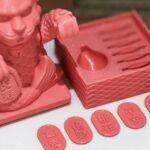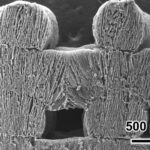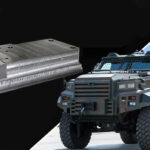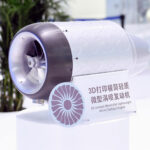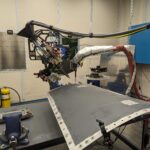Industrial 3D printer manufacturer Farsoon Technologies collaborated with American tooling production company Next Chapter Manufacturing to develop DMLS (direct metal laser sintering) 3D printing parameters for H13 tool steel. H13 steel has historically been very difficult to process with laser sintering due to its high carbon content, which is prone to evaporate at the extreme temperatures required for sintering, leading to thermal cracks and other internal flaws in printed parts.
Farsoon engineers ran countless tests, tweaking various print parameters such as scanning strategies, laser power, heat treatments, and internal-stress releasing before they landed on the optimal settings. Their efforts definitely paid off; their 3D printed H13 parts have a density of over 99% and mechanical properties that are nearly identical to wrought H13 tool steel.

“We decided to partner with Farsoon Technologies because its system is open, which means we can develop specific processes that enable us to print H13 and other tool steels efficiently.” Says Jason Murphy, president of Next Chapter Manufacturing. “This open parameter system also enables us to do test builds and refine our process to improve robustness and speed further. The technology of the Farsoon machine gives designers a significant amount of additional freedom to provide the most efficient designs for additive manufacturing, which other machines do not offer.”
3D Printed Lifters for Moldmakers
One of the first applications of the material was to 3D print lifters for separating and cooling plastic parts from their injection mold cores. H13 is often used in extrusion dies and injection mold components because it displays stability through heat treatments and is very resistant to compression and wear. By 3D printing the lifters, they were able to incorporate a conformal cooling circuit into the design that reduces the cycle time from 48 seconds to 30 seconds, a 37.5% improvement. What’s more, the performance gain is calculated to achieve $100,000 in annual savings.

The ability to work with H13 steel in DMLS 3D printers will likely have a dramatic effect on the manufacturing industry as it relies heavily on the steel and the production of custom shapes. “H13 has been the standard for building robust molds, but that material did not exist within the additive material spectrum until recently. Standard offerings were not traditional grades of tool steel, which created additional barriers for moldmakers to adopt 3D-printed tooling into their moldmaking process. Previously, additive metals were held to one or two grades of steel for which additive machine builders developed machine parameters,” added Murphy. “Our specialty is development of H13 in DMLS, where others use maraging steel. We believe this development gives us a leg up because we’ve experienced H13 outperforming maraging steel by 20 to 25 percent, which aligns with the demand from moldmakers and molders to get the most out of their tooling investment.”
Read more about the lifter case study on nxcmfg.com.
Images courtesy of Farsoon



